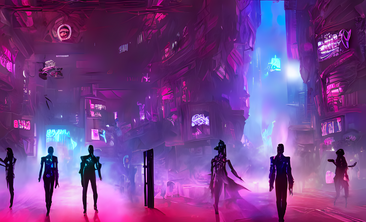
A Story is Like…
A Story is Like… https://www.visualstorytell.com/wp-content/uploads/2021/07/Comparisons.jpg 366 222 Shlomi Ron Shlomi Ron https://secure.gravatar.com/avatar/995c0cf093380b90c7704fda398c9addf4e5c605afbc92af5c3f01f67d65aa41?s=96&d=mm&r=g
Life is like a box of chocolates.
You never know what you’re gonna get.”
– Forrest Gump
How do use comparisons in your visual storytelling?
As a visual storyteller, one of your powerful communication tactics – you may not even realize – is comparing one aspect of your business to another in a completely different field to prove a point, right?
We all do it by leveraging familiar meanings (box of chocolates) to non-trivial ones (life).
Ha! You mean metaphors and analogies, right?
Right! However, there is a lot of confusion about what they mean and how to use or rather not overuse them.
Let’s clear it up.

From just hinting, stating to explaining
When you compare two things in your photos and videos on your Instagram, LinkedIn, presentation, or blog – your comparison could come in 3 strength levels:
1) Metaphor
This is the low-strength comparison when you simply compare two things and expect your audience to complete the whole meaning in their minds.
Take a look at the visual below: “Stories are music.”
It’s an implicit statement I ask people to figure out my intent. You may come up with various explanations.
I intended to compare music to stories in terms of tone of voice. What does your story sound like Rough, formal, authentic?
The visuals of different music genres hint at this direction further.
You can bring up a notch the strength level of your comparison and use:
2) Simile
Here you use a medium strength comparison when you explicitly compare two things using connecting words “like” or “as” to communicate specific aspects of the comparison.
I like how YourDictionary puts it.
What do you understand from this statement?
“My shoes are garbage.”
You likely get a general idea that something is wrong with the shoes but you don’t know exactly what.
However, if I use a simile: “My shoes smell like garbage.”
Well now, you know why I chose garbage 🙂
Lastly, when you don’t want to leave any room for misinterpretation you may want to max the strength level of your comparison and use:
3) Analogy
This type of comparison tends to be more complex and lengthy than a metaphor or simile. Here you have more room to provide more information.
Let’s look at this example:
 In this example, I compare a story to a mirror.
In this example, I compare a story to a mirror.
I don’t stop there and further explain why it’s effective in driving audience response and how: when there is an overlap between two types of stories.
In this case, I use a mirror analogy with a visual metaphor of the “total eclipse” to amplify that magic moment.
***
The key message is that all similes are metaphors but not all metaphors are similes.
If you follow my Instagram, you’ll find a ton of other visual comparisons.
Few tips for the road
When you have a message you want to communicate, brainstorm what kind of associations it carries, what comparison type would work well, and how visually you can bring it to life.
Be sure not to overuse comparisons and balance it with straight simplicity. Don’t make your audience work too hard to understand your intent.
And you’re correct, definitely test your visual story with friends and colleagues to ensure your intent is clearly coming across to avoid misinterpretations.
Now that you know the difference, what comparison label would you give Forrest Gump’s classic quote I used in my opening?
Feel free to share your answer below and if you’d like how you use these 3 types of comparisons in your visual storytelling.
Until next time, keep your visual metaphors, similes, and analogies kicking and inspiring!
Need help developing your brand’s visual storytelling strategy? Let’s chat!
- Post Tags:
- analogy
- comparisons
- metaphor
- simile
Shlomi Ron
Shlomi Ron is the founder and CEO of the Visual Storytelling Institute, a Miami-based think tank with a mission to bring the gospel of visual storytelling from the world of art to more human-centric and purpose-driven marketing. A digital marketing veteran with over 20 years of experience working both on the agency and brand sides for Fortune 100/500 brands such as Nokia, IBM, and American Express. He started VSI to combine his marketing expertise with his passion for visual stories stemming from his interests in classic Italian cinema and managing the estate of video art pioneer, Buky Schwartz. At VSI, he helps brands rise above the communication noise through visual storytelling consulting, training, and thought leadership. Select clients include Estée Lauder, Microsoft, and Cable & Wireless – to name a few. He currently teaches Brand Storytelling at the University of Miami’s Business School. Thought leader and speaker at key marketing conferences. He is also the host of the Visual Storytelling Today podcast, which ranks in the top 10 best business storytelling podcasts on the Web. His book: Total Acuity: Tales with Marketing Morals to Help You Create Richer Visual Brand Stories. Outside work, he is a nascent bread baker, The Moth fan, and longtime fedora wearer likely to jive with his classic Italian cinema interest.
All stories by: Shlomi RonYou might also like
3 comments
This site uses Akismet to reduce spam. Learn how your comment data is processed.





Leave a Reply